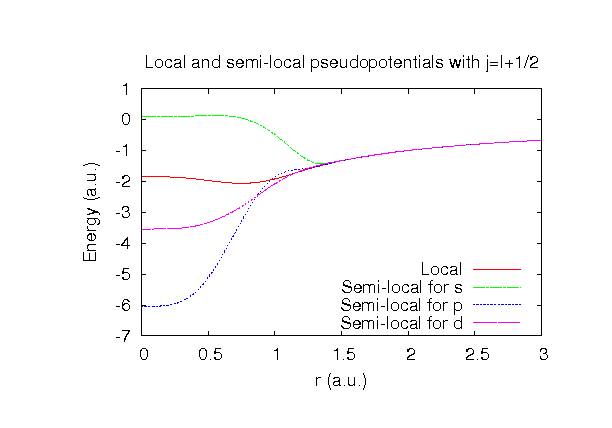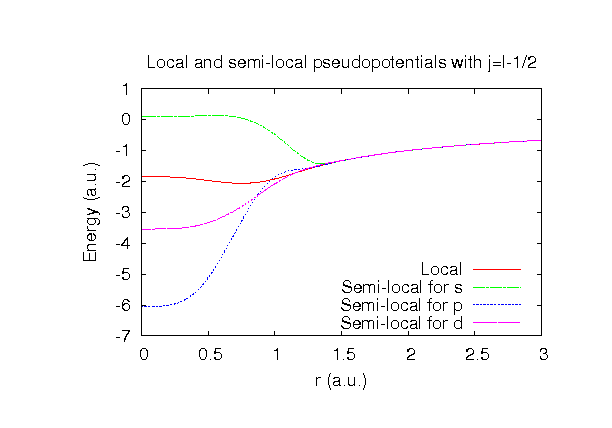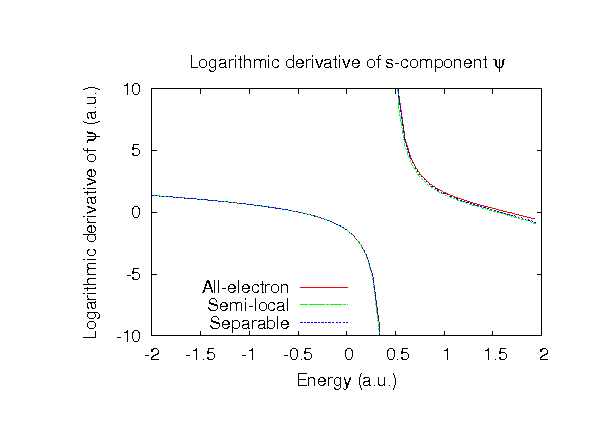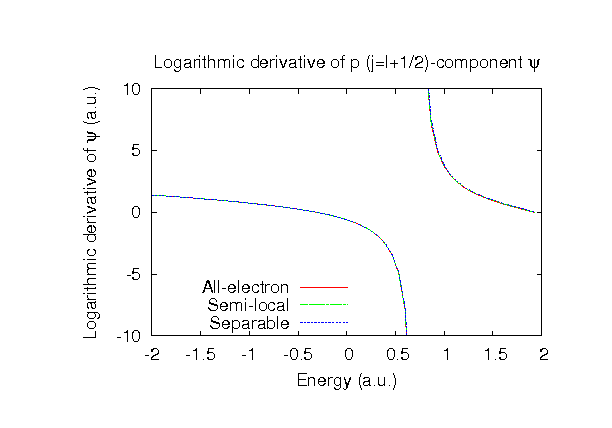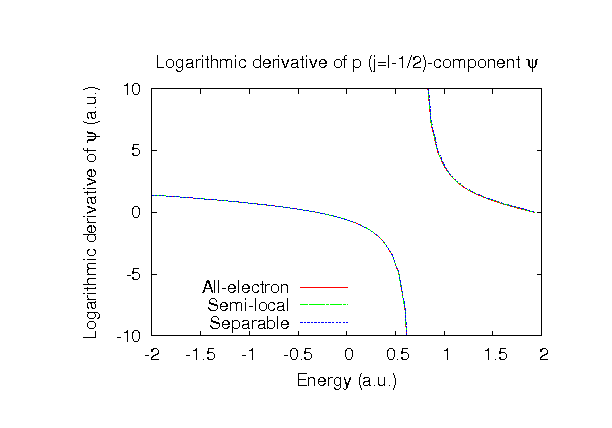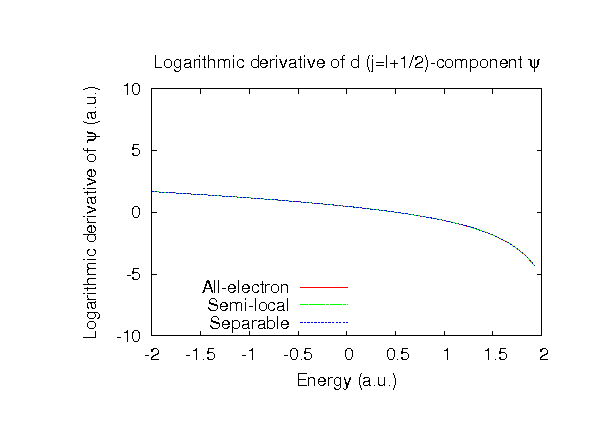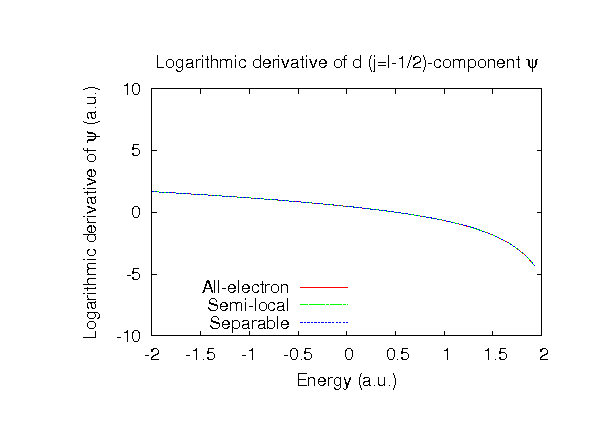Benchmark calculations by the PBE13 pseudopotential with the various basis functions
(1) Calculation of the total energy as a function of lattice constant in the fcc structure, where the total energy is plotted relative to the minimum energy for each case. a0 and B0 are the equilibrium lattice constant and bulk modulus obtained by fitting to the Murnaghan equation of state. The difference between Be7.0-s3p2 and Be7.0-s3p3d1 in the total energy at the minimum point is 0.025 eV/atom. An input file used for the OpenMX calculations can be found at Befcc-EvsV.dat . For comparison the result by the Wien2k code is also shown, where the calculation was performed by default setting in the Ver. 10.1 of Wien2k except for the use of RMT x KMAX of 12. 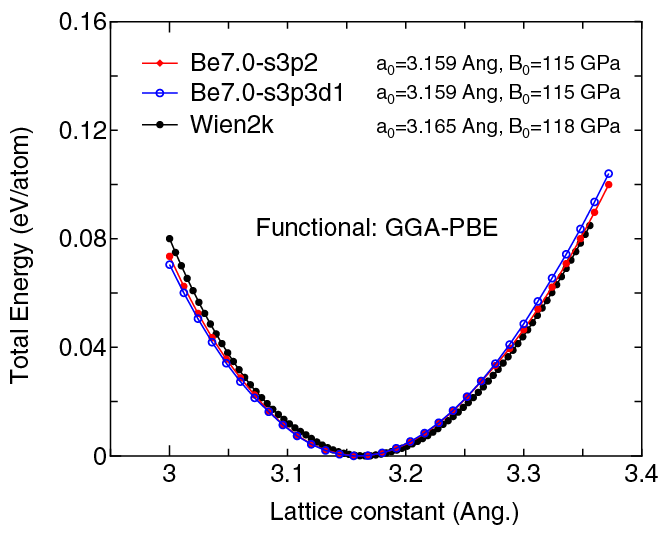
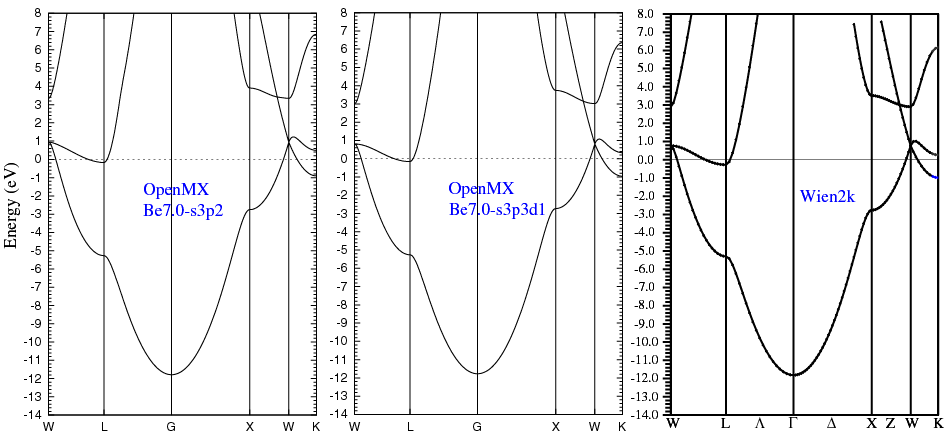
(3) Calculations of a BeO molecule with S=1, where Be_PBE13.vps and Be9.0-s3p2 or Be9.0-s3p3d1 were used. The input files used for the OpenMX calculations can be found at BeO.dat , BeO_cp1.dat , BeO_cp2.dat , BeO_Be.dat , and BeO_O.dat .
| Equilibrium bond length (Ang.) | Dipole moment (Debye) | Atomization energy (eV) | Atomization energy (couterpoise corrected) (eV) | |
| Be9.0-s3p2 | 1.368 | 5.57 | 4.90 | 4.89 |
| Be9.0-s3p3d1 | 1.359 | 5.81 | 5.09 | 5.08 |
| Other calc. | 1.319 a | 6.18 a | 4.81 a | |
| Expt. | 1.331 b | - | - |
a B3LYP result: J.C. Pinheiro, F.E. Jorge, and E.V.R. De Castro, Int. J. Quantum Chem. 78, 15 (2000).
b K.P. Huber and G. Herzberg, Constants of Diatomic Molecules, Van Nostrand Reinhold, New York, 1979.
